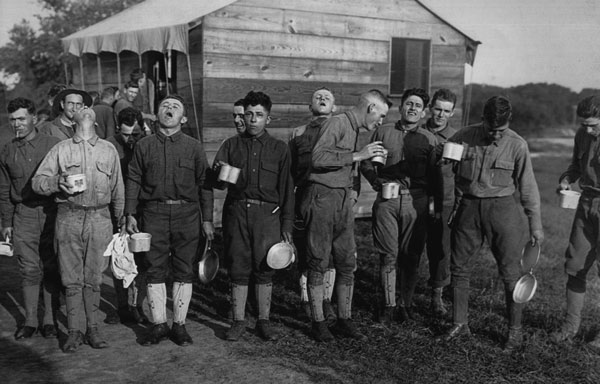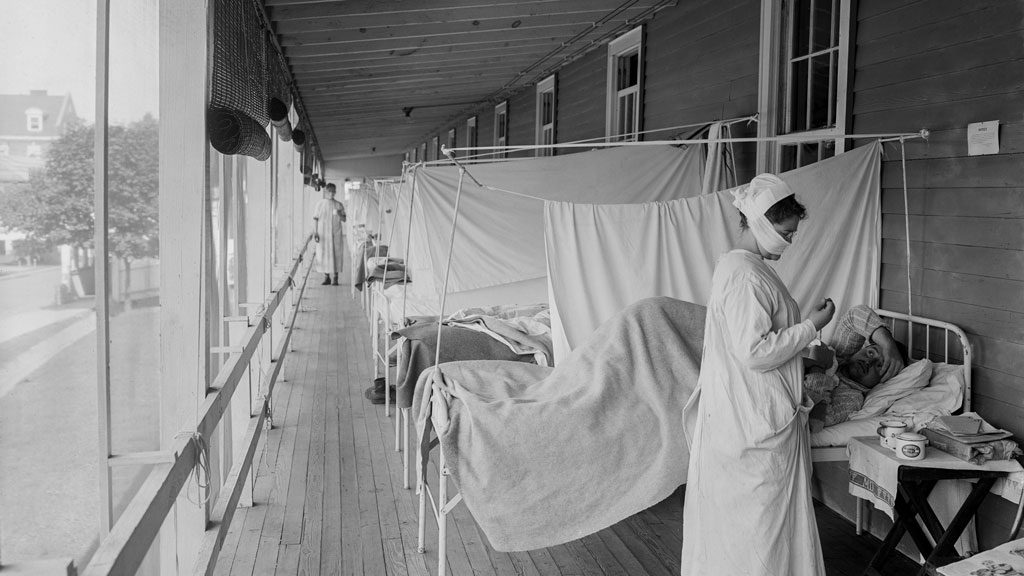As the threat of the coronavirus looms over Canada, one doesn’t have to look too far into history to see what happened when another flu-like illness hit the country and B.C.
From 1918 to 1919 Spanish Influenza killed an estimated 50- to 100-million people worldwide, including 50,000 people in Canada. An estimated 4,000 people died in B.C. — a quarter of those in Vancouver. In today’s numbers that would be about 37,000 deaths for B.C. and 5,000 for Vancouver.
Researchers and historic newspapers shed light on the pandemic and how it impacted working people and the construction industry.
In the fall of 1918, the British Columbia Record newspaper announced the illness had begun to impact construction work on several massive ship projects at the Coughlan’s shipyard.
“At Coughlan’s shipyard the ‘War Cavalry’, fourth of the 8,800-tonne class, was to have been launched last Friday,” reads the paper. “But a shortage of men, due to the fact that practically 25 per cent of the staff is ill with the ‘flu’ did not allow the big steamer being gotten ready in time.”

The flu hit just as four new berths were being laid for an enlarged program of wooden shipbuilding at Coughlan. Illness also tragically impacted both the Wallace and Lyall yards on the north shore.
“Wallace’s next launching, originally set for next week, will have to be further extended,” wrote the Record. “The Lyall yards are especially hard hit owing to the recent death of Frank Davey, superintendent of the yards, who succumbed last week to an attack of the ‘flu’.”
As the disease spread across the province, many of the sick flocked to Vancouver. A lack of facilities prompted the media to call for a response.
“It is almost a scandal the way in which many cases the infected have been forced to undergo treatment in what are by courtesy termed ‘isolation hospital’ buildings, but which are really more fit for cattle than to treat suffering human beings in,” wrote one reporter.
By December 1918 plans had been made to immediately construct an emergency hospital for $30,000 near Vancouver General Hospital. Irked that they were being footed with the costs of patients travelling from hundreds of miles away, Vancouver officials went to Victoria and convinced the province to foot half the bill of construction, arguing that the flu would likely spread through the winter and more beds were needed.

In January, health authorities announced that good progress was being made on the one-storey emergency hospital and that the first ward of the building was expected to be completed and equipped ready for the reception of patients within days.
The project wasn’t without controversy. Newspapers at the time noted that construction was being done by day labour. The British Columbia Record wrote that the “fact that no local architect was called on to prepare the plans or no contractor was asked to bid on the construction occasioned considerable adverse criticism from the architects and contractors of the city.”
As the flu ripped through Vancouver, researchers found that young working people were most likely to get sick and die. Sarah Buchanan, a researcher at Queen’s University found that those who were between the ages of 19- 39, the immigrant population, and those who were employed had the highest odds of dying from influenza.
“To put it briefly, an individual had an increased risk of dying of influenza if they were employed no matter what occupation they held.”
At least one fervent letter to the British Columbia Federationist in the fall of 1918 blamed the spread of disease on the conditions of workers.
“Are there any health inspectors in B.C.? Why don’t they visit some of those hog-pen lumber camps and compel them to clean up or close up?” wrote T. Woods of Victoria Street in Kamloops. “The lumber camps of the Northern Construction Company at Blackpool are something fearful.”
Woods described tiny beds, no ventilation, tiny windows, rotten clothing, and tin cups so greasy, you could leave your fingerprint in them.
“Under such conditions, how can there be anything but sickness all over the country,” he said, noting that he witnessed scores of men from Saskatoon and Edmonton growing ill and some dying.
“A few prosecutions with heavy fines or terms of imprisonment for some of the managers and camp foremen and we would soon have clean, sanitary camps instead of hog-pens.”
As of March 4, B.C. has 12 confirmed cases of coronavirus, four of which have recovered.











Recent Comments